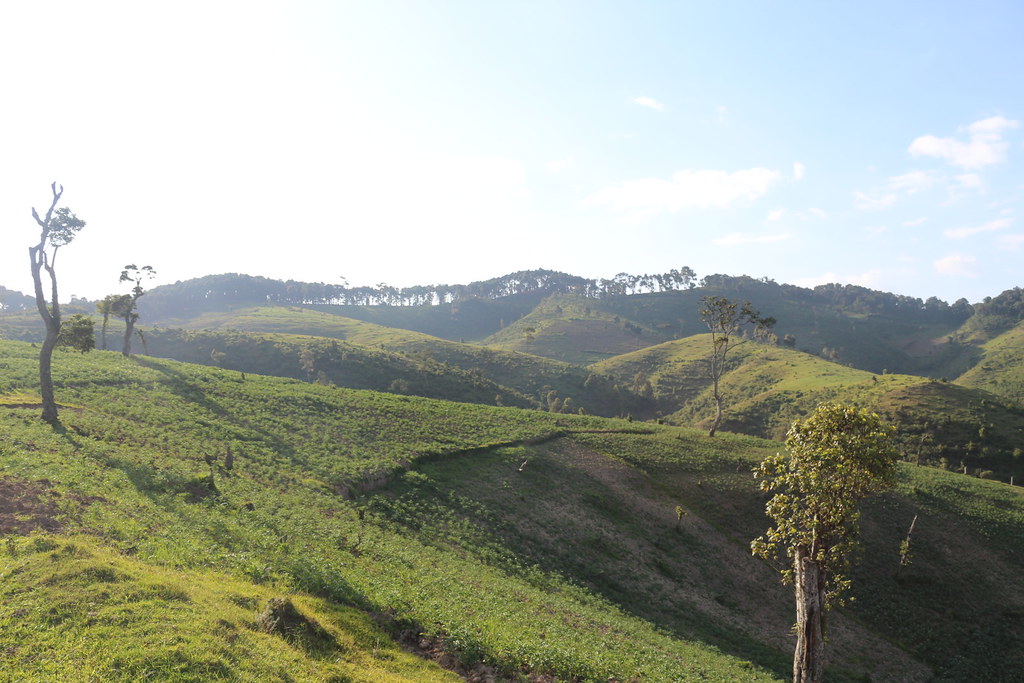Gishwati–Mukura National Park Rwanda – The Newest Jewel of Rwanda’s Forests
Perched along the rolling hills of western Rwanda, Gishwati–Mukura National Park is a sanctuary reborn — a symbol of renewal, conservation, and hope. As Rwanda’s newest national park, it tells a remarkable story of restoration. Once heavily deforested and degraded, Gishwati–Mukura has been revived into a thriving ecosystem teeming with primates, birds, and plant life.
For travelers seeking an intimate, off-the-beaten-path experience, this park offers a chance to walk through lush forests, meet playful monkeys and chimpanzees, and witness how Rwanda is redefining conservation for the 21st century.
A Park Reborn from the Past
Gishwati–Mukura National Park was established in 2015 by combining two separate forest reserves — Gishwati Forest in the north and Mukura Forest in the south — to create a single protected area spanning approximately 34 square kilometers. These forests once formed part of a vast chain of montane rainforests stretching from the Virunga Mountains to Nyungwe Forest.
Over the years, extensive deforestation, human settlement, and farming nearly destroyed the ecosystem. But through the Gishwati Area Conservation Program and partnerships with the Rwanda Development Board (RDB) and Forest of Hope Association, the area has been successfully restored. Today, the forest is once again alive — a living example of Rwanda’s dedication to reforestation and sustainable tourism.
The Forest Experience
Visiting Gishwati–Mukura is like stepping into a hidden Eden. The park’s landscape is a beautiful tapestry of rolling hills, bamboo groves, rivers, and thick forest canopies dripping with moss. Unlike larger and busier parks, this one offers a tranquil and deeply personal connection with nature.
Guided forest walks are the main activity here, allowing visitors to explore trails that wind through the forest while observing primates, birds, butterflies, and medicinal plants. Every step reveals the quiet magic of regeneration — the forest healing itself under the care of dedicated conservationists and local communities.
Wildlife and Primates of Gishwati–Mukura
The park is home to an increasing number of chimpanzees, currently being habituated for eco-tourism. Tracking these chimpanzees is one of the most exciting and rare experiences in Rwanda, as visitors may observe them foraging, grooming, or communicating high in the trees.
Other primates found in the park include:
-
Golden Monkeys – playful and colorful residents of the bamboo zones
-
L’Hoest’s Monkeys – shy forest dwellers often seen along quiet trails
-
Blue Monkeys – lively and social, often spotted in family groups
-
Black-and-White Colobus Monkeys – graceful leaf-eaters that move elegantly through the canopy
Gishwati–Mukura also shelters other small mammals, reptiles, and a growing bird population as the ecosystem recovers.
Birdwatching Paradise
For bird lovers, the park is a haven of rare and endemic species, especially those unique to the Albertine Rift region. Over 230 bird species have been recorded here, including:
-
Regal Sunbird
-
Ruwenzori Batis
-
Strange Weaver
-
Grey Crowned Crane
-
Grauer’s Swamp Warbler
-
Mountain Yellow Warbler
-
White-headed Woodhoopoe
The quiet setting and manageable size of the forest make birdwatching easy and immersive — an ideal experience for both beginner and seasoned birders.
The People and the Park
One of Gishwati–Mukura’s greatest strengths lies in its community-centered conservation model. Surrounding communities have been deeply involved in the park’s restoration through sustainable farming, reforestation projects, and eco-tourism development.
Visitors can enjoy cultural experiences such as guided village walks, traditional dance performances, and visits to local cooperatives that produce handicrafts, honey, and herbal products. These interactions provide valuable insight into how conservation and community livelihoods can thrive side by side.
Activities in Gishwati–Mukura National Park
-
Chimpanzee and Monkey Tracking: Guided treks to spot primates in their natural habitat.
-
Bird Watching: Early morning walks to see rare Albertine Rift species.
-
Forest Nature Hikes: Explore the park’s trails with an expert ranger, learning about plants, insects, and wildlife.
-
Waterfall Visits: Discover small forest waterfalls that add charm to the hiking routes.
-
Cultural Encounters: Meet local residents, visit tea plantations, and learn about the park’s conservation journey.
Accessibility and Location
Gishwati–Mukura National Park lies about 2.5 hours from Kigali by road and is easily accessible en route to or from Nyungwe Forest or Volcanoes National Park. The main entry point is near Rutsiro District, and visitors can stay at nearby eco-lodges or in the vibrant town of Rubavu (Gisenyi) on the shores of Lake Kivu.
The park’s convenient location allows travelers to combine it with other iconic Rwandan destinations — creating a seamless northern-to-southern safari circuit across the country’s natural wonders.
When to Visit Gishwati–Mukura
The park is open year-round, but the dry seasons (June–September and December–February) are best for hiking and wildlife tracking, as trails are easier to navigate. The wet seasons (March–May and October–November) bring lush green scenery and are ideal for birdwatching.
Where to Stay
Accommodation options near Gishwati–Mukura include:
-
Gishwati Lodge: A luxury eco-lodge overlooking the forest, offering comfort, privacy, and guided nature walks.
-
Rubavu Hotels (Lake Kivu): Great for travelers combining forest adventures with lakeside relaxation.
Future plans include community-based lodges and campsites to further expand sustainable tourism in the area.
Conservation and the Future of Gishwati–Mukura
The creation of Gishwati–Mukura National Park is one of Africa’s most inspiring conservation success stories. It represents Rwanda’s unwavering commitment to protecting biodiversity and restoring ecosystems. With the ongoing reforestation efforts, chimpanzee numbers are rising, bird populations are thriving, and local communities are benefiting from tourism revenue.
The park is also part of Rwanda’s broader “Green Growth” initiative, which aims to increase forest cover, promote sustainable energy, and create eco-friendly livelihoods. Gishwati–Mukura stands as a living symbol of hope — proof that damaged ecosystems can heal when nature and people work together.
Final Thoughts
Gishwati–Mukura National Park is Rwanda’s hidden gem — a peaceful, rejuvenated forest that captures the beauty of renewal and the spirit of conservation. It offers travelers a rare chance to explore untouched rainforest trails, encounter chimpanzees in the making of a new story, and contribute directly to the park’s future.
For those seeking a quiet, meaningful, and sustainable adventure, Gishwati–Mukura is more than a destination — it’s an inspiration. Here, nature speaks softly, but its message is powerful: that with care and commitment, even lost forests can live again.





